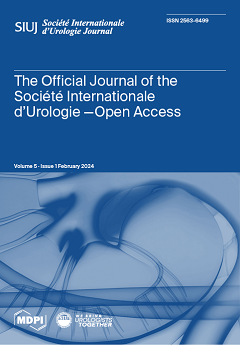Introduction: Urological cancers account for a significant portion of cancer diagnoses and mortality rates worldwide. The traditional treatment options of surgery and chemoradiation can have significant morbidity and become ineffective in refractory disease. The discovery of the CRISPR system has opened up new avenues for cancer research by targeting specific genes or mutations that play a role in cancer development and progression. In this review, we summarise the current state of research on CRISPR in urology and discuss its potential for improving the diagnosis and treatment of urological cancers.
Methods: A comprehensive literature search was conducted on databases including PubMed, Embase, and Cochrane Library. The keywords included CRISPR and urology OR prostate OR renal OR bladder OR testicular cancer.
Results: CRISPR has been used extensively in a preclinical setting to identify and target genes in prostate cancer, including AR, NANOG, ERβ, TP53, PTEN, and PD-1. Targeting PRRX2 and PTEN has also been shown to overcome enzalutamide and docetaxel resistance in vitro. In bladder cancer, CBP, p300, hTERT, lncRNA SNGH3, SMAD7e, and FOXA1 have been targeted, with HNRNPU knockout demonstrating tumour inhibition, increased apoptosis and enhanced cisplatin sensitivity both in vitro and in vivo. Renal cancer has seen CRISPR target VHL, TWIST1, PTEN, and CD70, with the first in-human clinical trial of Anti-CD70 CAR T cell therapy showing an excellent safety profile and durable oncological results. Lastly, testicular cancer modelling has utilised CRISPR to knockout FLNA, ASH2L, HMGB4, CD24, and VIRMA, with NAE1 found to be over-expressed in cisplatin-resistant germ cell colonies.
Conclusions: CRISPR is a cutting-edge technology that has been used extensively in the pre-clinical setting to identify new genetic targets, enhance drug sensitivity, and inhibit cancer progression in animal models. Although CAR T cell therapy has shown promising results in RCC, CRISPR-based therapeutics are far from mainstream, with further studies needed across all urological malignancies.
Full article



